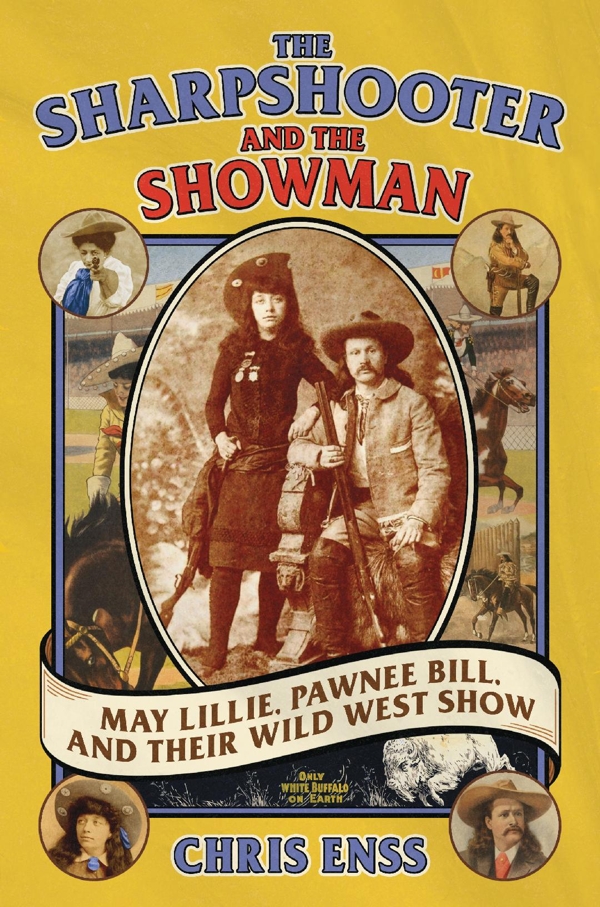1889 – A 1.9 million-acre tract of Indian Territory for white colonial settlement in Oklahoma officially starts at 12pm
The Divine Sarah
Enter now to win a copy of
Entertaining Women: Actresses, Dancers, and Singers in the Old West

The pliant figure leaned over the ship’s rail, expressive eyes intent on the blue-green waters of the harbor. A mass of wavy, light brown hair with tints of gold lifted and curled with every breeze, its arrangement a matter of complete indifference to the angler. Suddenly the slender form froze, breath held, and then, with a quick yank and a breaking smile, lifted the rod and hauled a wriggling fish aboard the Cabrillo. Exclaiming in French, dark eyes sparkling with pleasure, Sarah Bernhardt ordered her catch, small as it was, to be prepared for dinner.
It was May 19, 1906, and the farewell production of Camille was scheduled for a few hours later at the ocean auditorium built on the water at Venice, California. Sarah stayed, and fished, at the hotel built like a ship, and performed in the adjacent theater on the wharf at the seaside resort, Venice of America. Having caught a fish, Sarah wended her way to her quarters. Piled high in her dressing room were the results of a recent shopping trip to the Oriental bazaar nearby: silk and crepe matinee coats of pink and pale blue and mauve, all embroidered in butterflies and bamboo designs.
The tiny window in the dressing room provided a sparkling view of the ocean, and the streaming sunshine picked out details of the furnishings: a repoussé silver powder box, containers of pigment, eyebrow pencils, silver rouge pots, and scattered jewelry twinkling in the light. The tragedienne who attracted huge audiences wherever she went swooped up a small tan and white fox terrier, wriggling with joy at her return, and snuggled it close for a moment as she related the happy details of her fishing venture to a visiting reporter. Then, she put down the small dog and closed her mind to the fun waiting outside the porthole.
Within moments Sarah became Marguerite Gautier, filled with the sadness and torment of the beautiful French courtesan in Camille. The play, written by Alexandre Dumas, became her signature role. She performed Camille more than 3,000 times all over the world. Sarah’s ability to sink fully into the character of the play made the tragic death scene so convincing that it became a trademark for “the Divine Sarah.”
No one played tragedy with such believable intensity as Sarah Bernhardt, and no one brought as much passion and enthusiasm to the pursuit of pleasure. From fishing on the southern California coast to bear hunting in the woods outside Seattle, on every western tour the French actress indulged in some kind of adventure. Sarah Bernhardt threw herself into life with the same characteristic energy she put into her stage appearances. Yet she often slept in a coffin, preparing for that final sleep.
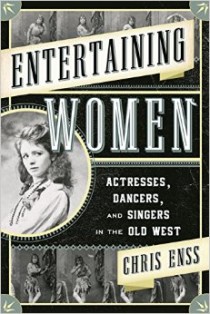
Entertaining Women 4
I'm looking forward to hearing from you! Please fill out this form and I will get in touch with you if you are the winner.
Join my email news list to enter the giveaway.
"*" indicates required fields
To learn more about Sarah and other performers like her read
Entertaining Women: Actresses, Dancers, and Singers in the Old West
Life in the Far West
This Day…
1906 – San Francisco earthquake and fire kills nearly 4,000 while destroying 75% of the city
One of America’s First Great Actresses
Enter now to win a copy of
Entertaining Women: Actresses, Dancers, and Singers in the Old West
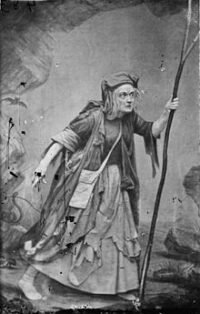
It was a cold evening in the early spring of 1859 when the well-known actress Charlotte Cushman debuted in Shakespeare’s Hamlet at the Metropolitan Theatre in San Francisco. The city’s most wealthy and influential people arrived by carriage. Throngs of curious bystanders eager to see the aristocrat hovered around the walkway leading into the building. The fine, brick edifice rivaled the most notable on the East Coast.
Inside, the grand hall was fitted with the most ornate fixtures and could seat comfortably upwards to a thousand people. From the private boxes to the gallery, every part of the immense building was crowded to excess. Charlotte Cushman was recognized by theatre goers as the “greatest living tragic actress,” and everyone who was anyone wanted to see her perform. Several women had won fame with their impersonations of male characters in various dramas, but critics and fans alike regarded Charlotte as the best of them all.
In 1845, a theatrical reviewer in London had written about one of Charlotte’s performances in glowing terms. “Miss Cushman’s Hamlet must henceforth be ranked among her best performances. Every scene was warm and animated, and at once conveyed the impression of the character. There was no forced or elaborate attempt at feeling or expression. You were addressed by the whole mind; passion spoke in every feature, and the illusion was forcible and perfect.”
The audience that flocked to see the exceptionally talented Charlotte in California was not only treated to a “forcible and perfect” interpretation of Hamlet, but that evening they were also treated to a display of the actress’ temper.
Charlotte and her supporting cast played to an enraptured house for the first half of the production. Actors maneuvered themselves in and out of the elaborate set consisting of a castle and turrets standing on the right side of the stage and imposing cliffs rising out of the fog on the left side of the stage. The simulated sounds of wind wailing through the crevices of stone and of the sea crashing against the rocky shore added to the drama. During a particular scene between Hamlet and Ophelia, Hamlet’s intended wife, a man in the audience sneezed loudly and with a long drawn out cach-oo!
Charlotte stopped and stared at the man. Then, quietly leading the actress playing Ophelia off the stage, she approached the footlights and said in a loud tone, “Will someone put that person out”? Everybody sat still. “If some gentleman doesn’t, I will,” Charlotte announced rolling up her sleeves. The individual got up and sneaked out the theatre. Only after the audience had turned its full attention back to Charlotte did she proceed with the play.
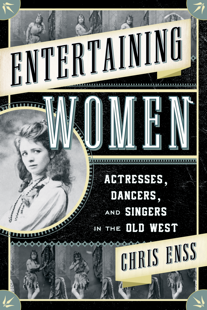
Entertaining Women 4
I'm looking forward to hearing from you! Please fill out this form and I will get in touch with you if you are the winner.
Join my email news list to enter the giveaway.
"*" indicates required fields
To learn more about Charlotte and other performers like her read
Entertaining Women: Actresses, Dancers, and Singers in the Old West
This Day…
Mr. Pettigrew Opens in Theaters April 18
This Day…
1862 – American poet Emily Dickinson first corresponds with author and future literary mentor Thomas Wentworth Higginson, a relationship that lasts the rest of her life
The Frenzy of Frisco
Enter now to win a copy of
Entertaining Women: Actresses, Dancers, and Singers in the Old West
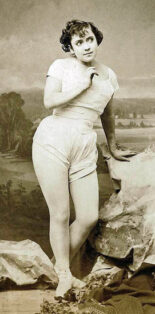
On August 24, 1863, San Francisco’s elite flocked to Maguire’s Opera House. Ladies in diamonds and furs rode up in handsome carriages; gentlemen in opera capes and silk hats strutted in stylishly. It was an opening night such as the city had never before seen. All one thousand seats in the theatre were filled with curious spectators anxious to see the celebrated melodramatic actress Adah Menken perform.
Adah was starring in the role that made her famous, that Prince Ivan in Mazeppa. It was rumored that she preferred to play the part in the nude. Newspapers in the East reported that audiences found the scantily clad thespian’s act “shocking, scandalous, horrifying and even delightful.” The story line of the play was taken from a Byron poem in which a Tartar prince is condemned to ride forever in the desert snipped naked and lashed to a fiery, untamed steed. Adah insisted on playing the part as true to life as possible.
The audience waited with bated breath for Adah to walk out onto the stage, and when she did, a hush fell over the crowd. She was beautiful, possessing curly, dark hair and big, dark eyes. Adorned in a flesh-colored body nylon and tight-fitting underwear, she left the audience speechless. During the play’s climatic scene, supporting characters strapped the star to the back of a black stallion. The horse raced up the narrow runway between cardboard mountain crags. The audience responded with thunderous applause. Adah Menken had captured the heart of another city in the West.
Adah became known as “The Frenzy of Frisco,” but wanted to be the frenzy of the entire West. In 1864 she took to the road again, traveling east to Virginia City, Nevada. She opened her Virginia City show on March 2, 1864. Tickets ranged in price from $1.00 for a single seat to $10.00 for a private box.
The theater was packed on opening night. Many people were forced to stand in the aisles, and hundreds were turned away. Local critics, including a young Samuel Clemens (later to be known as Mark Twain), were present to review her performance. Adah was ushered onto the stage by thunderous applause. She brought down the house, and appreciative miners threw silver ingots at her feet. Sam Clemens was thoroughly impressed. He would return numerous times to see Adah perform.

Entertaining Women 4
I'm looking forward to hearing from you! Please fill out this form and I will get in touch with you if you are the winner.
Join my email news list to enter the giveaway.
"*" indicates required fields
To learn more about Adah read
rEntertaining Women: Actresses, Dancers, and Singers in the Old West
This Day…
1872 – Jesse James‘ gang robs a bank of $1,500 in Columbia, Kentucky, 1 dead

